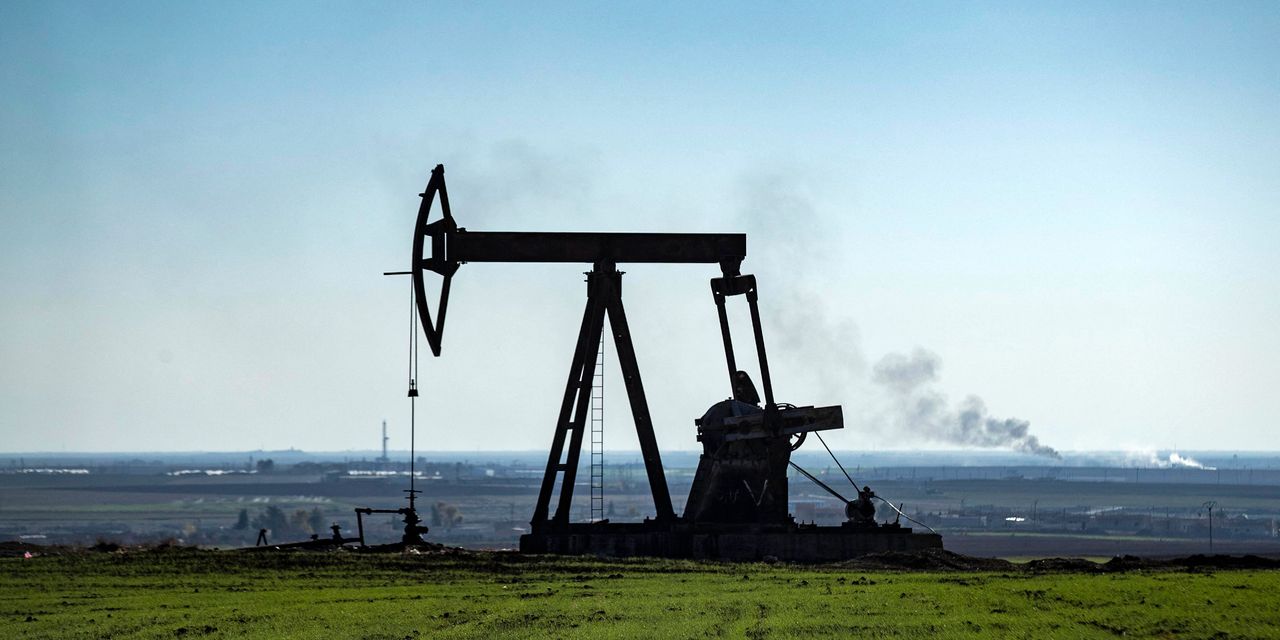International oil prices ended the three months through June with the fourth quarterly loss in a row, the longest losing streak since the data started being kept in 1988.
Brent crude futures fell $4.87 per barrel in the second quarter, or 6.1%, to $74.90. That has taken a toll on energy stocks. The Energy Select Sector SPDR fund (ticker: XLE) ended the half down 7.2% this year.
The slump comes despite market dynamics that have looked bullish. China has now fully reopened from Covid-19 restrictions and is using more oil, and OPEC has cut its production by more than 3.5 million barrels a day to help support prices.
But supply has continued to outpace demand in recent months for a few reasons. On the supply side, the impact of OPEC cuts has been blunted by production increases elsewhere, including in the United States. On the demand side, the rebound has been weaker than expected, including in China, where manufacturing has been slow to expand post-Covid.
While warnings of a sharp global recession haven’t panned out, economic growth has been relatively weak in several parts of the world. That has weighed on oil demand. In the second quarter, the U.S. Energy Information Administration estimates that global oil supply was 101.3 million barrels a day and demand was 100.8 million barrels.
The oversupply could shift to undersupply in the coming quarter, however. Saudi Arabia is unilaterally cutting another 1 million barrels a day of its production starting in July, and U.S. supply growth is likely to slow. Producers have reduced the number of rigs in operation in recent weeks as oil and gas prices have stayed low. In the third quarter, the EIA expects demand to exceed supply by about 200,000 barrels a day.
“Despite the recent weakness in oil prices during May, we expect that global oil inventories will decline in each quarter from the third quarter of 2023 through the third quarter of 2024, which we expect will put gradual upward pressure on oil prices,” the EIA predicted in a June report. Its latest price target for Brent crude in the third quarter is $78.32 a barrel.
That said, there has been a big discrepancy between the “paper” oil market and the reality on the ground. While most analysts had expected the market to tighten by now, oil remains plentiful. For one thing, Russia has continued to produce about as much oil as it did before its invasion of Ukraine, despite sanctions and a pledge to cut production by 500,000 barrels a day.
RBC Capital Markets analyst Michael Tran says data from July will be the crucial determinant of where oil trades for the rest of 2023.
“The next six weeks will dictate the next six months,” he wrote in a note published on Friday. Tran expects about 2 million barrels of oil a day to be pulled out of storage during the third quarter, a “huge” drop in inventories.
“Saudi [production] cuts, the seasonal return of 2+ million barrels a day of refinery capacity and leading indicators of strong Chinese crude imports should all bode well for a tighter physical market next month,” he wrote. RBC expects Brent to average $80 a barrel in the third quarter.
But Tran is also cognizant that similar predictions haven’t played out this year. If the inventory draw doesn’t happen, “market apathy” toward oil will only grow. Investors are already wary of buying oil stocks when the energy transition is ramping up. Weak prices will only make them less willing to buy.
“Such an outcome would leave bullish risk takers disenchanted in deploying into the rest of the year, in our view,” he wrote. “After all, the physical market is undefeated.”
Corrections & Amplifications: RBC Capital Markets analyst Michael Tran expects oil inventories to decline in the third quarter. An earlier version of this article incorrectly said that he expected inventories to increase.
Write to Avi Salzman at [email protected]
Read the full article here





